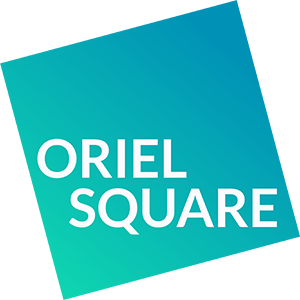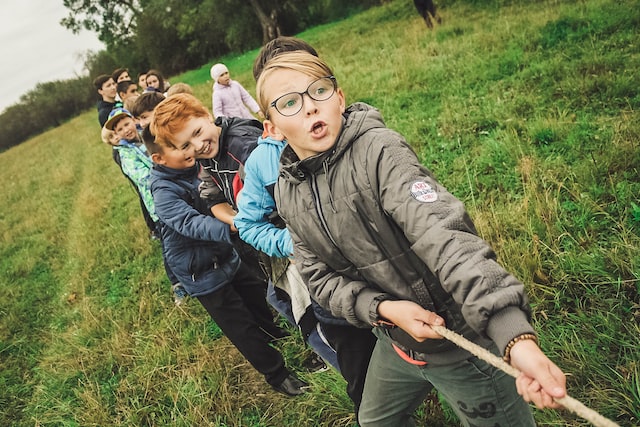Ben Keith is a primary school teacher in a state school in Oxfordshire, and a member of the Oriel Square Classroom Expert team. He discusses his experience of teaching science at Key Stage Two (KS2) – first in early lockdown and later in a restricted setting. He reflects on the impact of the environment on teaching and learning science.
What was your experience of teaching during lockdown?
Although English and Maths was set quite formally, in terms of Science it was much more ‘fluid’.
In the first lockdown, the school set two-weekly blocks of voluntary work for the children to do, with no expectation that this work would get done. Although English and Maths was set quite formally, in terms of Science it was much more ‘fluid’, with ideas given as to what children could do, rather than specific tasks.
During the second lockdown we had a much better quality offering. We prepared detailed PowerPoints which gave the children a structure for the whole day, every day. We did weekly check-ins with groups of 5-6 children lasting 30-40 minutes, which meant I was in Zoom meetings throughout the day. These calls were really good in terms of engagement for my Year Five students; I’d run scavenger hunts, or pre-made quizzes using Blooket. The children particularly enjoyed Gold Quest where they answered questions to earn gold, and could steal from others as well.
Later, Zoom meetings became a daily occurrence at 9am, where I did registration for a half hour. There were schools in the area who were doing more ‘live’ lessons: some secondary schools were holding Teams lessons right from the first lockdown, but we didn’t want to put pressure on children who weren’t comfortable on screen.
How did you teach science practicals, both during lockdown and after, when restrictions were in place?
The practical science learning during lockdown was very thin.
I researched science practicals online; via the TES I found the Hamilton Trust and used their resources on Forces. I’d use these resources every Friday afternoon to set remote science practicals which the children could run with. I only saw three children attempting the activities though, and that was because our approach to remote learning was quite flexible, meaning that the tasks were voluntary – and it was Friday afternoon. Some children did bring their work back into school, but not many. The practical science learning during lockdown was very thin.
As we have returned to face-to-face teaching, it has been hard for the children and the other adults because no mixing was allowed for a while and teachers have often been off with COVID. Good resources help, like the Hamilton Trust, which are detailed, thorough and have fun themes the students can engage with. You get a list of resources you’ll need, the background science, it’s open-ended, and there’s more investigative tasks as well. These resources have given me the confidence to set practicals up and get things going. But the demands on my time – going through the steps for planning, setting up the test, then getting results, drawing graphs and so on – is much more than two hours, which is the designated time I have for the week to teach science.
What impacts did the learning environments have on your teaching of science?
It’s all about planning the topics over the environments we have available, like woodland or playground areas.
We have great outside grounds, so we’ve been able to study topics like Habitats. For Forces we measured friction on different surfaces. It’s all about planning the topics and considering the environments we have available, like woodland or playground areas.
Children love experimenting. They love the freedom to play around and get their hands on things. Science can be difficult to engage them in initially because you have to set a quite formal structure; for example, you need to give clear guidance to support the children fill out a planning sheet, even if it has been well designed. Technical vocabulary like “variable” has needed a lot of re-teaching and over-teaching as well. But once you get going, they get on well.
The children in my class love activities, more than writing things up. We have made paper parachutes, although that activity can be quite difficult to achieve as it involves changing the length of strings or the material the bag is made out of. And so I found that much of the work was actually making a parachute, rather than understanding how parachutes work.
A challenge to running practicals outside is ensuring the practice and support is available and making sure the students have been systematic in their approach – which often goes out the window once they get outside!
What were the long-term effects of lockdown on science at your school?
One long-term drawback of the lockdowns has been that we’ve not been outside school as much.
One long-term drawback of the lockdowns has been that we’ve not been outside school as much. The children have rarely been able to do much fieldwork: we did one school trip for Year Four where they went to Winchester Science Centre. But as a teacher I’ve not done any visits – I did a moderation meeting for the first time in two years recently, for example. Even going to someone else’s lesson is tricky. There needs to be more drive from teaching staff and leaders to get enough exposure to other teachers. We’ve not been able to have visitors come in to talk about science to the children, which is a shame.

